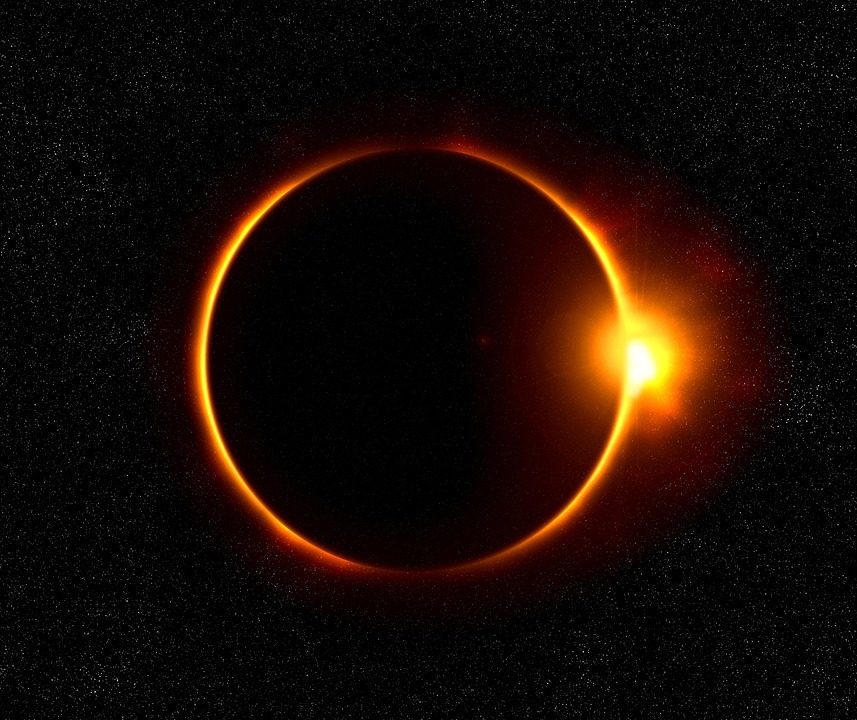
This coming Monday, August 21, 2017, many of us here in the United States will be able to witness a solar eclipse! The last viewable one in this country occurred in 1979! For those of us who were alive back then, do you remember where you were on that day? If you were alive, you almost certainly do, as it was just as big of an event back then as it is now. Back in 1979, there were no special glasses you could put on to view it, but in 2017 there are. If you are interested in viewing the solar eclipse this year, here are a few important facts to know before viewing the eclipse....
1. A solar eclipse is going to occur on August 21, 2017, and will be visible throughout the United States. There is a 70 mile wide zone starting in Salem, Oregon and going to Charleston, South Carolina in which a total eclipse will be able to be seen. Other parts of the country will see a partial eclipse. Here in Cerritos, we will see a roughly 70% eclipse.
1. It is not safe to look at the sun directly. If you do, you can develop a condition called solar retinopathy. This is a condition in which the macula of the eye is damaged by exposure to the sun's radiation.
2. How long does it take looking at the sun before damage occurs? There is not much research done on this subject, but some studies have shown as little as 30-60 seconds of looking at the sun can cause solar retinopathy.
3. What are the symptoms of solar retinopathy? Symptoms can show up a few minutes to a few hours after viewing the sun, in the form of decreased, blurry vision, and a black spot in the middle of your vision similar to what you see after you look at a camera flash going off, except this one doesn't go away. These symptoms typically occur in both eyes.
4. How do you safely view the eclipse? Looking at it with the naked eye is not safe. Looking at it with normal sunglasses is also not safe. You need to wear special solar eclipse sunglasses. There are many people selling these glasses, so to make sure the ones you buy will legitimately protect your eyes, make sure they are ISO certified with the number 12312-2. Also look for the manufacturer's name and label on the glasses. NASA's website has a list of reputable vendors of solar filters: www.nasa.gov.
Also make sure the glasses/filters are less than 3 years old, and that the filters are not wrinkled or scratched. If you plan to take a picture, make sure you use a special solar filter for your camera. A list of special solar filters can be found on the Nikon website.
1. A solar eclipse is going to occur on August 21, 2017, and will be visible throughout the United States. There is a 70 mile wide zone starting in Salem, Oregon and going to Charleston, South Carolina in which a total eclipse will be able to be seen. Other parts of the country will see a partial eclipse. Here in Cerritos, we will see a roughly 70% eclipse.
1. It is not safe to look at the sun directly. If you do, you can develop a condition called solar retinopathy. This is a condition in which the macula of the eye is damaged by exposure to the sun's radiation.
2. How long does it take looking at the sun before damage occurs? There is not much research done on this subject, but some studies have shown as little as 30-60 seconds of looking at the sun can cause solar retinopathy.
3. What are the symptoms of solar retinopathy? Symptoms can show up a few minutes to a few hours after viewing the sun, in the form of decreased, blurry vision, and a black spot in the middle of your vision similar to what you see after you look at a camera flash going off, except this one doesn't go away. These symptoms typically occur in both eyes.
4. How do you safely view the eclipse? Looking at it with the naked eye is not safe. Looking at it with normal sunglasses is also not safe. You need to wear special solar eclipse sunglasses. There are many people selling these glasses, so to make sure the ones you buy will legitimately protect your eyes, make sure they are ISO certified with the number 12312-2. Also look for the manufacturer's name and label on the glasses. NASA's website has a list of reputable vendors of solar filters: www.nasa.gov.
Also make sure the glasses/filters are less than 3 years old, and that the filters are not wrinkled or scratched. If you plan to take a picture, make sure you use a special solar filter for your camera. A list of special solar filters can be found on the Nikon website.
 RSS Feed
RSS Feed
